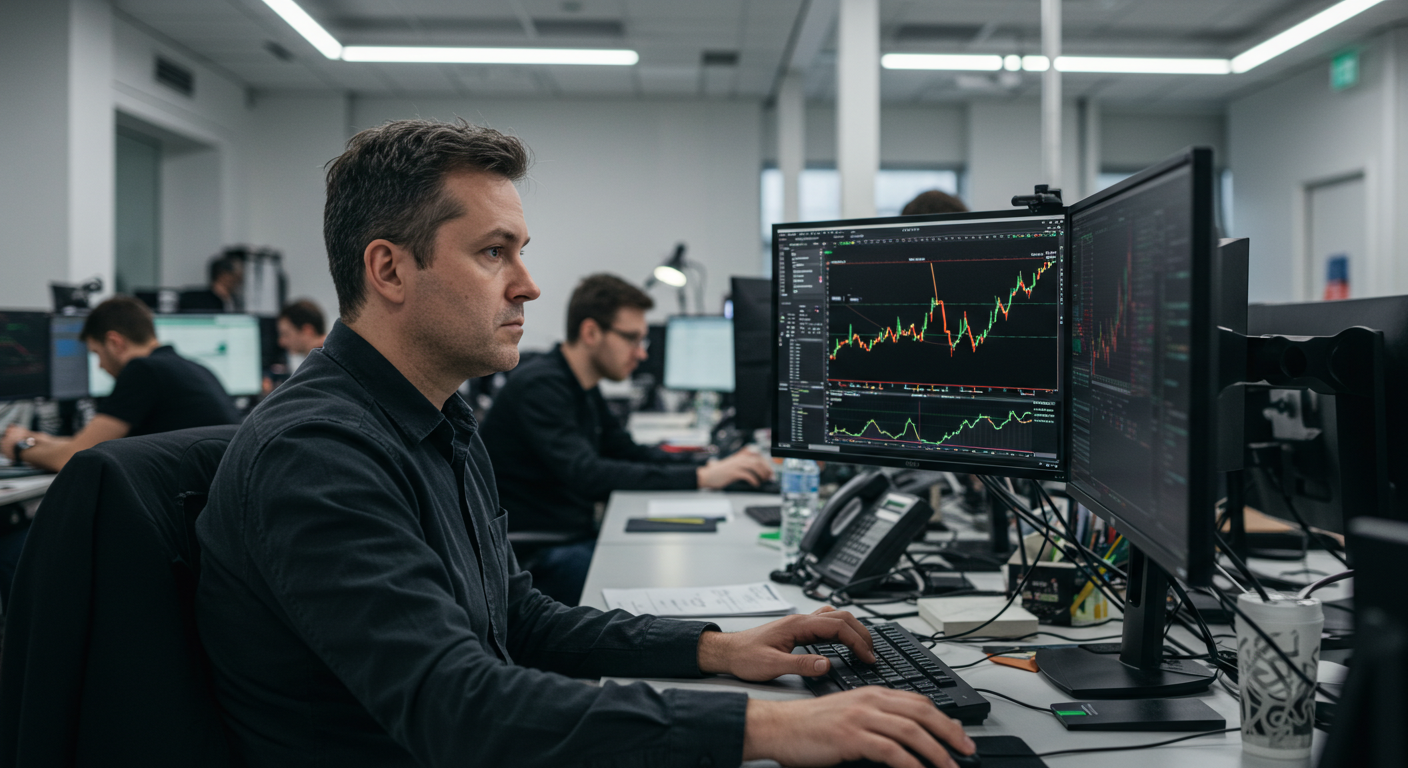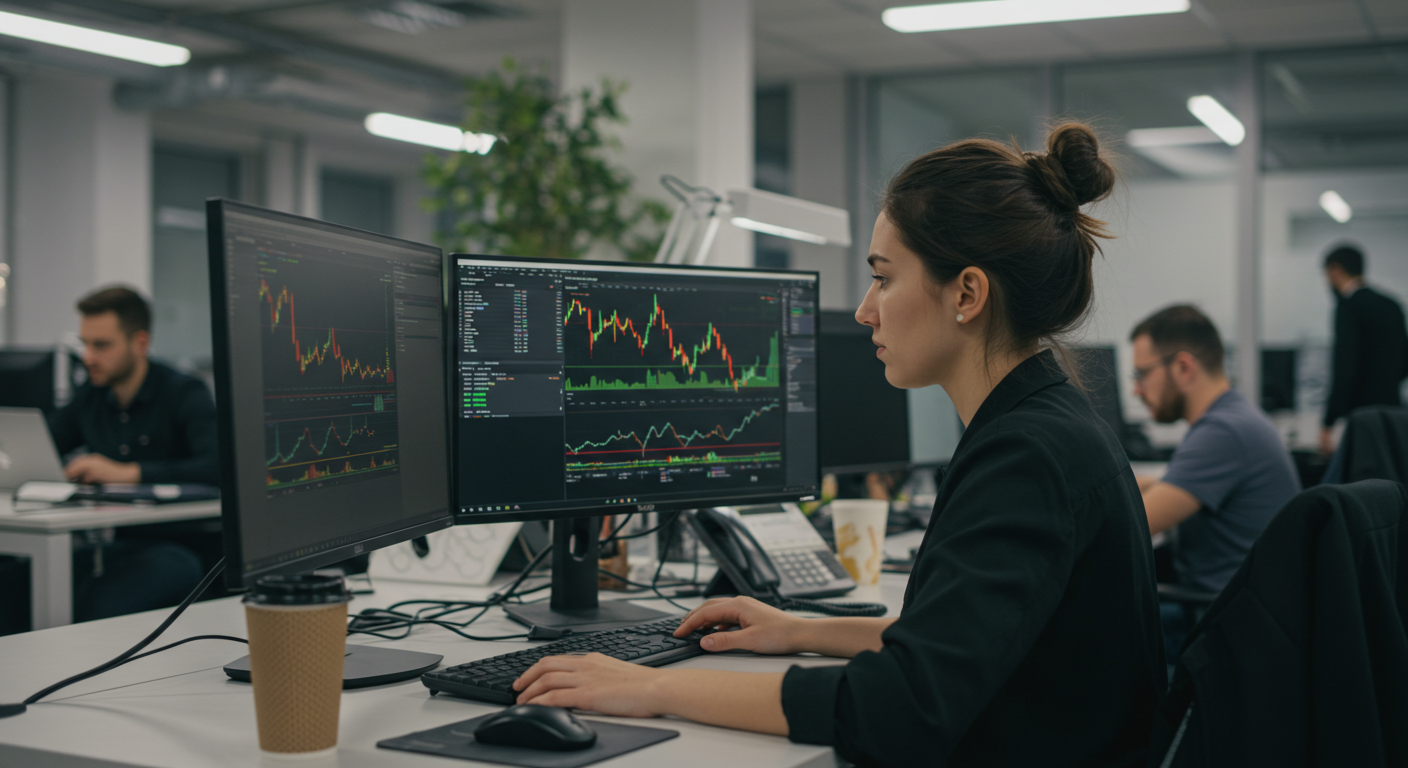Derivatives trading lets crypto traders profit from price swings without owning coins directly. Two of the most talked-about derivatives are contracts for difference (CFDs) and futures. CFDs offer flexibility and easier market access, while futures bring standardization and often higher liquidity.
In this article, we’ll break down CFD vs futures, showing how each works, their pros and cons, and which traders might prefer one over the other.
If you’re looking to sharpen your crypto trading strategy or just want to understand your options, this comparison is made for you. You’ll walk away knowing whether CFDs or futures fit your style, so you can trade with confidence.
Understanding CFDs and Futures
Getting a clear picture of “CFD vs futures” is the first step in deciding which derivative suits your trading goals. Both allow you to trade on the price movements of assets like Bitcoin or Ethereum without holding the underlying coins.
Still, the way they work and the risks they present can differ greatly. Below, you’ll find an easy explanation of each so you can make smarter choices in the crypto market.
What is CFD Trading?
CFD stands for “Contract for Difference.” When you trade CFDs, you’re entering an agreement with your broker to exchange the difference in the price of an asset from when your trade opens to when it closes. You don’t actually own the asset, you’re simply speculating on whether its price will rise or fall.
Here’s how CFD trading works in a nutshell:
- Long or short: Bet on price moves in either direction. You can profit if the asset goes up (long) or down (short).
- No ownership: You never take possession of the coins or tokens. Gains and losses are settled in cash with your broker.
- Margin trading: CFDs allow trading with leverage, letting you control a bigger position than your actual capital. This means bigger potential gains, but also bigger risks.
- Accessible and flexible: Many crypto brokers offer CFDs, making it easy to enter or exit trades with low minimums.
CFDs are especially attractive to crypto traders because they let you act fast, hedge existing positions, or manage risk without dealing with wallets or blockchain transfers.
What are Futures Contracts?
Futures contracts are legal agreements to buy or sell a specific asset at a set price on a specific date in the future.
Unlike CFDs, futures are standardized and usually traded on dedicated exchanges. They’re popular in traditional finance, and now, cryptocurrency futures are taking off as well.
Key features of futures contracts:
- Standardized terms: Each contract specifies the asset, the amount, and the expiration date. This creates a transparent, organized trading environment.
- Margin requirements: Traders must deposit a percentage of the contract value (margin) up front. The required margin amount can vary by exchange and by asset, affecting your risk and potential returns.
- Mark-to-market settlement: Profits and losses are calculated and settled daily. This helps keep risk in check and ensures traders meet their margin obligations.
- Expiration and delivery: Crypto futures typically settle in cash, so you don’t actually receive the coins unless you choose physical delivery (rare in crypto markets).
Futures offer structure for active traders who want clarity and consistent rules. Because of their high liquidity, they attract everyone from individual traders seeking a quick move to institutional players managing huge portfolios.
Both CFDs and futures have unique uses in cryptocurrency trading, so learning the difference can help you pick the right tool for your approach.

Key Differences Between CFDs and Futures
Now that you have the basics, let’s compare CFDs and futures head-to-head.
With crypto, the details matter more than ever. Differences in ownership, leverage, settlement, expiry, and fees will shape your trading strategy, your risks, and your profit potential. Let’s break down CFD vs futures so you can see which might work best for what you want to do.
1. Ownership and Settlement
When comparing CFD vs futures, ownership sets the tone from the start.
- CFDs do not give you any ownership over the underlying asset. Instead, when you enter a CFD, you’re making a deal with your broker about the price movement. Your gains or losses are settled in cash. There is no transfer of coins or assets, just the exchange of profit or loss.
- Futures contracts, on the other hand, are structured around the legal agreement to buy or sell an asset at a predetermined price on a specific date. While most crypto futures settle in cash, some allow for physical delivery (usually in traditional markets rather than crypto). This clear contract and potential for delivery changes how some traders approach risk and strategy.
This key difference means CFDs are almost always about speculation rather than taking delivery, while futures can serve both speculators and those who want to lock in a price for future delivery. For projects where fast settlement is crucial, like in some NFT ecosystems, settlement speed and method can impact true value.
2. Leverage and Margin Requirements
Trading with borrowed money is a big draw, but not all derivatives treat leverage the same.
- CFDs typically offer flexible leverage. Many brokers let you set leverage as low as 2:1 or as high as 30:1 (sometimes even more). This flexibility means you can take bigger positions with less upfront capital, but it also raises your exposure and potential for quick losses. Leverage requirements are often set by brokers and can change based on market conditions.
- Futures contracts also use margin, but exchanges set strict requirements. Initial and maintenance margin amounts are standardized. While high leverage (like 50:1 or 100:1) is available for some crypto futures, the rules are clear and enforced. This structure helps keep trading transparent and risk in check.
To put it simply, CFDs offer more choice for the average trader, while futures demand more discipline.
3. Expiry, Fees, and Contract Terms
Both products handle expiry, rollovers, and fees in their own ways, and these details can eat into your profits if you’re not careful.
- CFDs generally have no expiry date. You can keep your position open as long as you meet your margin requirements and pay any ongoing fees, usually called “overnight” or “swap” These charges can add up if you hold trades for weeks or months.
- Futures contracts are defined by their expiry dates. Each contract has a set end date, and traders must either close or roll over their position before then. Some platforms charge fees for rolling contracts forward. Futures trading also usually comes with exchange fees per contract or per trade, which are clear at the outset.
If you want full flexibility, CFDs make sense. If you prefer structure, futures’ clear expiry can help you plan your trades. Fee structures also tend to be more transparent in futures, but overnight CFD fees can reduce profits if you aren’t actively managing your trades.
Remember, in the CFD vs futures debate, these contract details shape risk, strategy, and even which markets you can access. Choosing the right fit is about knowing your goals, your risk comfort, and how much effort you want to put into tracking fees and expiry times.

Advantages and Disadvantages of CFDs and Futures
Choosing between CFDs and futures comes down to balancing flexibility with structure, cost with access, and personal preferences about markets and risk.
The CFD vs futures debate is often shaped by what matters most to your strategy. Are you after easy entry and fast trades, or do you need solid rules and big liquidity? Here’s a breakdown of the main pros and cons of each to help you weigh your options.
Pros and Cons of CFD Trading
CFDs have surged in popularity among traders who want accessibility and speed. They suit everyone from day traders to hobbyists, but they also come with unique risks. Here are the standout advantages and possible downsides when looking at CFD vs futures.
Key Advantages of CFD Trading
- Open access: Start trading with low minimum deposits. Most brokers don’t require much capital, which opens the door to new traders.
- Simple to go long or short: Profiting from falling prices is just as easy as betting on gains.
- Flexible contract size: Trade fractional amounts without worrying about rigid contract sizes or expiry dates. This gives you full control over your position size.
- No actual asset transfer: No need for wallets, storage, or private keys. Everything stays virtual and straightforward.
- Tight stops and customization: Set stop-loss or take-profit orders to automate risk, tailoring each trade to your comfort zone.
Potential Drawbacks of CFD Trading
- Counterparty risk: Trades are made with your broker, not on a public exchange. If the broker fails, your position could be at risk.
- Ongoing fees: Holding positions overnight racks up nightly “swap” fees, which eat into profits over time.
- Limited regulation: Not all CFD providers are regulated, especially those outside major financial hubs. This can raise trust and security concerns.
- Slippage in volatile markets: Fast price changes may lead to trades being executed at worse prices than you expect.
- Tax treatment: Tax rules on CFDs can vary by location, and some jurisdictions treat CFD gains differently than spot crypto or futures profits.
Pros and Cons of Futures Trading
Futures contracts offer a more structured environment, with standardized rules and higher liquidity. Many professional traders favor futures for their transparency and reduced broker risk, but there are trade-offs.
Key Benefits of Futures Trading
- High liquidity: Popular futures exchanges drive heavy trading volume, keeping spreads tight and markets deep.
- Standardized contracts: Rules for margin, expiry, and settlement are clear, which helps with planning and risk control.
- Exchange-traded for less counterparty risk: Trades run through clearing houses and exchanges, lowering the risk that your trading partner defaults.
- No overnight swap fees: Futures don’t charge rolling swap fees, though you will pay a small commission each trade.
- Tax advantages in some regions: Some tax systems treat futures contracts more favorably than CFDs, especially for active traders. Platforms like Coinbase Derivatives lay out contract specs for those looking to compare.
Challenges of Futures Trading (Especially for Digital Assets)
- Bigger initial capital outlay: Futures exchanges may require higher margin deposits, which can price out some smaller traders.
- Less flexibility: Contracts have set expiration dates and sizes, which restricts tailoring to your exact needs.
- Potential for liquidation: Fast-moving crypto prices can trigger auto-liquidations if your margin falls too low.
- Complexity: Futures rules and margin requirements take time to learn. Mistakes can be costly.
- Regulatory hurdles: Futures trading is tightly regulated in many regions, which can restrict access for traders in certain countries.
For those new to futures, learning about margin requirements and trading tools at leading crypto exchanges can help you stay prepared.
When you weigh CFD vs futures, focus on what matches your style and how comfortable you feel with the risks. Both tools have a place in the crypto market, but each favors different goals and skill levels.

Choosing the Right Instrument for Crypto Traders
Deciding between CFDs and futures isn’t just about picking a product, it’s about matching your trading style and goals with the right tool.
Both instruments serve crypto traders, but your background and market focus will heavily shape which fits better. Before placing trades, consider your experience, appetite for risk, and how you want to participate in the growing Web3 and DeFi economy.
Considerations for Novices and Experienced Traders
Choosing between CFDs and futures starts with an honest look at your trading background.
If you’re new to trading, CFDs often provide a smoother learning curve:
- They let you start with small amounts and flexible position sizes.
- You can quickly go long or short without worrying about contract expiration.
- Risks can be managed with straightforward stop loss tools, allowing you to focus on honing skills instead of wrestling with complex mechanics.
For beginners, simplicity matters. CFD platforms usually offer demo accounts, simple interfaces, and plenty of educational content. This makes them perfect if you’re still setting your trading goals or building confidence before moving into more structured products.
For experienced traders, futures might be a better match:
- Futures demand discipline with rigid margin calls and position liquidation rules.
- Standardized contracts give structure, which suits those with advanced strategies.
- Higher liquidity and institutional-grade platforms support scalping, arbitrage, and complex portfolio hedging.
If you have significant trading experience or a deep understanding of market dynamics, the high liquidity and tight spreads found on futures markets can unlock more profit (but also more risk). Futures are a logical step if you’re looking to seriously scale your trading or develop automated trading systems.
No matter your skill level, both instruments will test your risk management.
Use Cases in Web3 & Crypto Markets
In the wider Web3 world, both CFDs and futures open new possibilities that go beyond just betting on price moves.
CFDs fit fast-moving, short-term strategies commonly found in DeFi and on newer exchanges. Here’s how they thrive:
- Yield farming and liquidity mining projects often see price spikes or sudden corrections; CFDs let you hedge without owning tokens directly.
- Small position sizes and easy entry allow active participants to quickly move in or out of markets tied to NFT drops or meme coins.
Futures contracts shine in more structured use cases:
- Professional traders and funds can lock in prices ahead of major token unlocks, exchange listings, or DeFi protocol launches.
- If managing risk across a diverse portfolio, futures provide strong tools for hedging while also meeting regulatory or reporting requirements common to bigger projects.
- Advanced DeFi protocols may offer tokenized futures, allowing seamless integration with yield, lending, or insurance applications.
As the crypto market matures, both instruments are showing up more often in creative economic structures. Futures might back decentralized lending pools to manage collateral risk, while CFDs are a key bridge product on hybrid exchanges.
The choice between CFD vs futures isn’t just about trading mechanics. It’s about integrating with the broader crypto ecosystem, matching your skill set, and staying agile as new opportunities emerge.
Take the time to pair your trading goals with the right instrument, and you’ll put yourself in a stronger position as Web3 continues to grow.
Conclusion
The main differences between CFDs and futures shape how traders manage risk, access markets, and act on opportunity.
CFDs give more flexibility and lower capital requirements, making them better for short-term strategies and those just starting out. Futures, on the other hand, offer greater transparency, predictable rules, and tight spreads that suit long-term or professional traders who want reliable access and liquidity.
Your ideal choice in the CFD vs futures debate depends on your confidence, goals, and appetite for risk. Both tools have a role in modern crypto trading, but matching them to your skill set is what really sets you up for success.

Adeyemi Adetilewa is a digital marketing strategist and writer with over a decade of experience helping B2B, SaaS, Web3, and eCommerce brands grow through data-driven marketing. Adeyemi empowers professionals and business owners with actionable insights, growth strategies, and digital tools for success.

